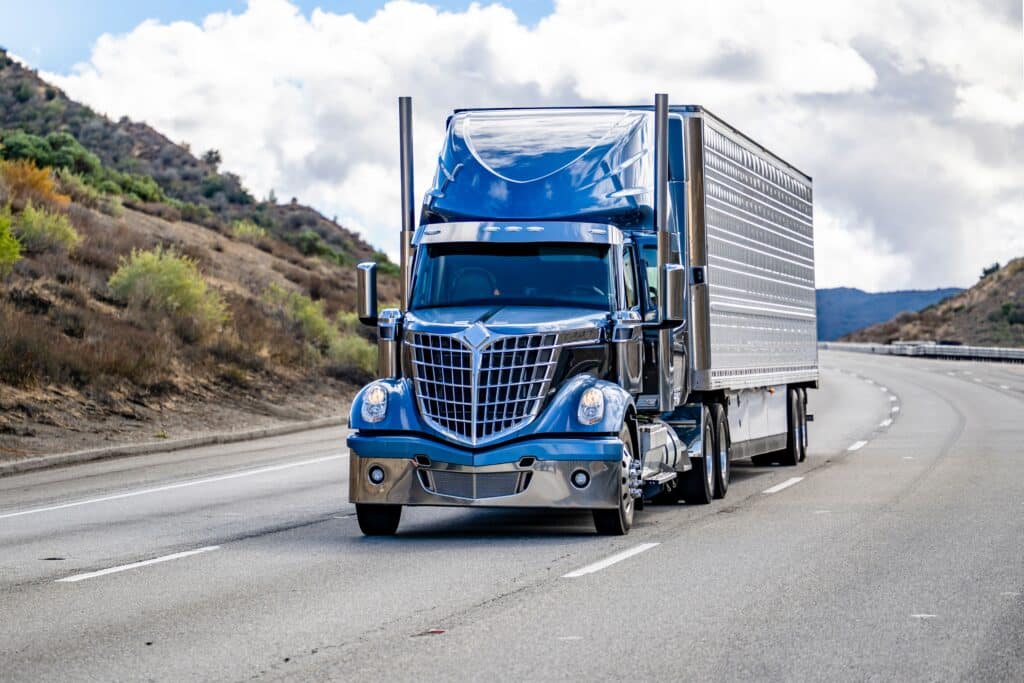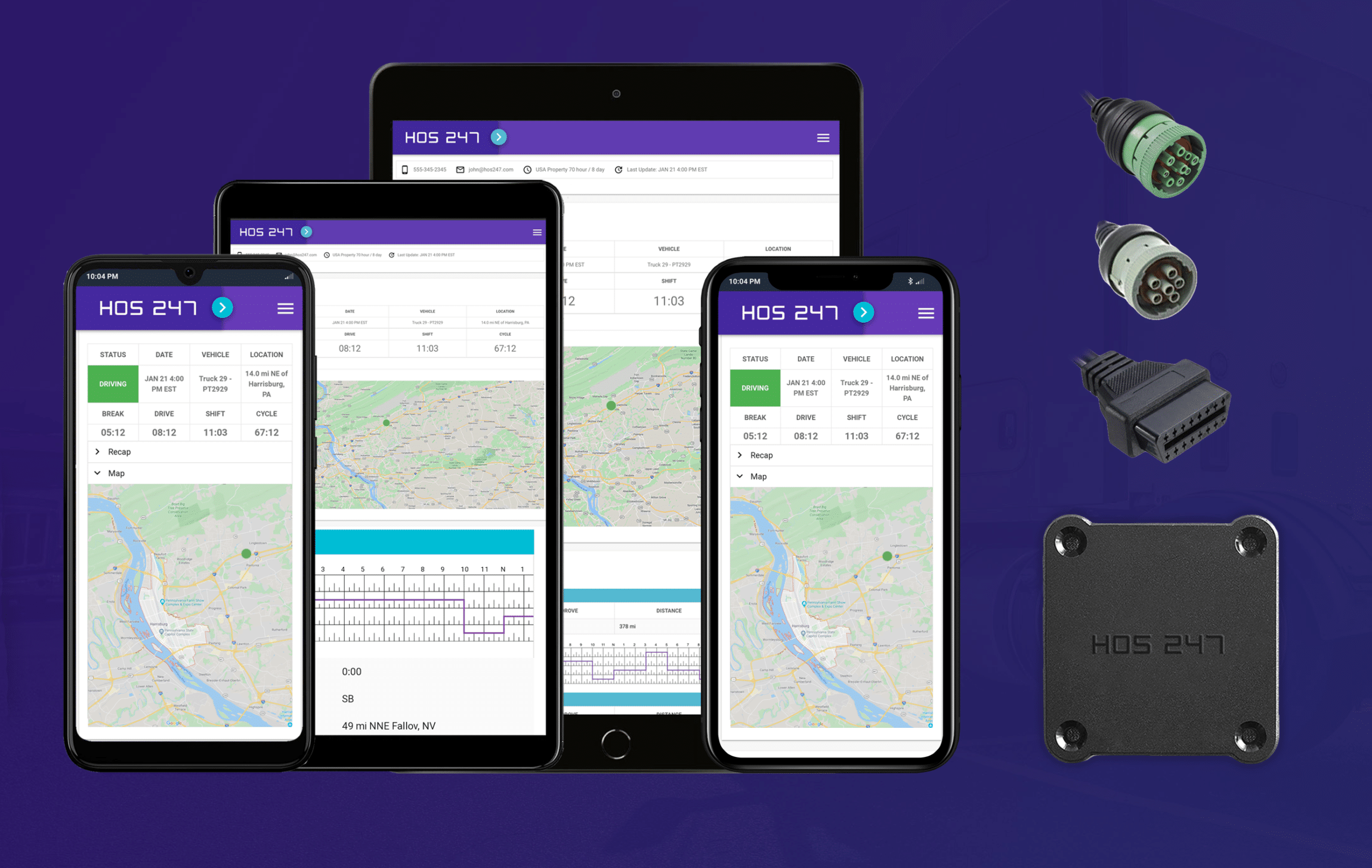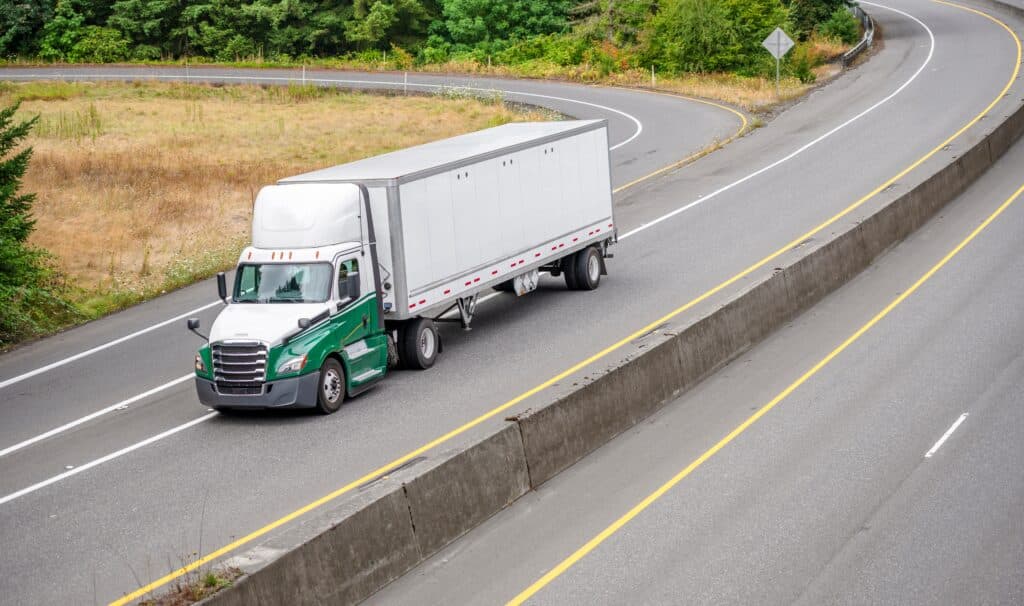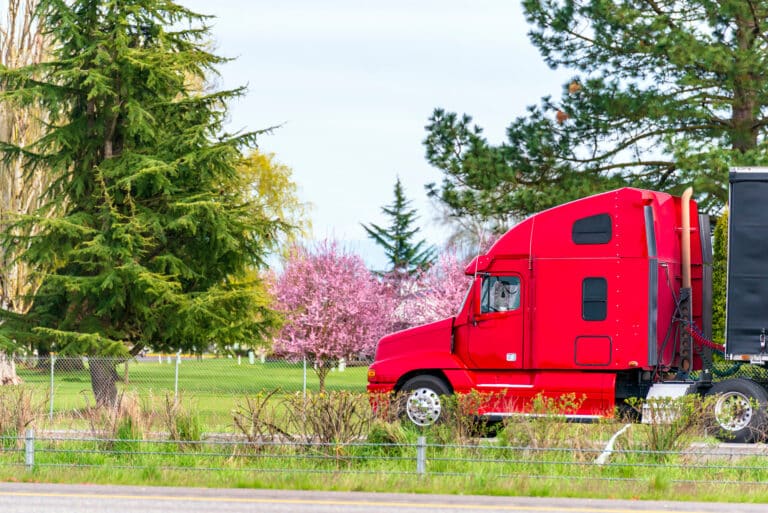Reliable electronic logging devices (ELDs) have become essential equipment for today’s truckers. Since the federal mandate took effect, these devices have moved from optional technology to required tools for staying compliant and running efficiently.
The ELD mandate changed how you track your hours, replacing paper logs with electronic systems that automatically record driving time. For most drivers, this change brought both benefits and challenges. Electronic logging cuts down on paperwork, but also raises questions about system reliability, ease of use, and practical implementation on the road.
You’ve probably experienced these challenges yourself. Maybe your current electronic logbook loses connection during DOT inspections, doesn’t work well in remote areas, or frustrates you with its complicated menus. You might be an owner-operator looking to upgrade from a basic system, or a fleet manager dealing with constant complaints from drivers about technical problems.
This guide will help you sort through your elog options with confidence. We’ll cover the features that make a real difference in your daily operations, show you benefits beyond just staying compliant, and help you evaluate options based on what matters to your specific situation. By the end, you’ll know how to pick amongst ELD device manufacturers that help make your job easier.
Do you have any questions? Talk to ELD Advisor: 650-405-3372 or Request Callback
Key Features to Look for in ELDs
When shopping for a new electronic logbook, focus on what actually matters in your day-to-day operations. The basics, like FMCSA compliance, are a given — all ELD certified manufacturers meet minimum requirements. What separates good systems from great ones are features that make your life easier on the road.
Your ELD interface should be intuitive enough to use without extensive training. Here’s what to prioritize:
- User-friendly design. Look for systems that let you update duty status in a few taps, with clear visuals showing your available hours at a glance.
- Simple inspection mode. During roadside inspections, you should be able to quickly show your logs without searching through complicated menus.
Connection reliability is equally important. Even the best interface is useless if the system fails when you need it:
- Reliable hardware. The device must withstand vibration, temperature changes, and the occasional bumps that come with trucking.
- Stable connectivity. The link between your ELD hardware and display device should remain reliable even in remote areas.
- Offline functionality. Quality systems store data locally when connection is lost and sync automatically when connectivity returns.
After-sale services can make a significant difference in your daily experience:
- Responsive technical support. Look for providers offering help when you actually need it, like evenings and weekends.
- Training resources. Quality providers offer video tutorials, knowledge bases, and quick-start guides that help you get comfortable with the system without extensive training.
- Warranty coverage. Look for providers offering hardware warranties that cover defects without complicated claim processes.
The best ELD mandate manufacturers balance compliance requirements with practical usability. A system that meets all the regulations but frustrates you daily isn’t worth the trouble.

Key Benefits of Quality ELD Solutions
A good ELD does more than just keep you compliant — it delivers real value that can improve your operation and bottom line.
Immediate operational benefits:
Electronic logs eliminate the hours spent filling out paper logbooks, giving you more driving hours or personal time. This efficiency extends to roadside inspections, where a quality ELD lets you present your logs quickly and clearly, getting you back on the road faster.
With automatic tracking and proactive alerts, electronic logbooks help prevent costly violations that can damage your CSA score and lead to more frequent inspections. Many drivers report fewer violations after switching to quality systems that provide clear warnings before reaching hours limits.
Beyond basic compliance:
Modern ELDs deliver real benefits that can improve your operation and put money back in your pocket:
- Protection against disputes. Electronic records provide solid proof of delivery times and locations, helping defend against customer claims about late deliveries.
- Improved safety scores. Automatic HOS compliance helps prevent violations that damage your CSA score, potentially lowering insurance costs and reducing inspection frequency.
- Route optimization. GPS tracking helps identify more efficient routes, with some fleets reporting fuel savings.
- Reduced breakdown risk. Engine diagnostic monitoring can alert you to potential issues before they cause breakdowns and lead to costly roadside breakdowns or missed deliveries.
- Simplified tax reporting. Automatic state mileage tracking eliminates manual calculations for IFTA reporting.
- Reduced insurance costs. Some insurance providers offer discounts for ELD users, recognizing the safety benefits and reduced risk these systems provide.
When choosing an ELD, look beyond the basic compliance features to find systems that deliver these operational benefits that improve your bottom line.

Common Trucker Pain Points
Every trucker has experienced frustrations with ELDs that don’t perform as promised. Understanding these common pain points can help you choose a system that works with you rather than against you.
Problem: Complex interfaces that waste time.
Many drivers waste valuable time navigating complicated menus just to update their status or view available hours. Even basic tasks can require multiple screens and confusing navigation.
Solution: Advanced ELDs offer interfaces with status updates in 2-3 taps and clearly visible driving hours on the main screen. Look for systems with color-coded warnings and simple navigation menus designed for use while on the road.
Problem: Connection failures in rural areas.
Connection failures create stress, especially during inspections or when crossing into areas with poor coverage. Basic systems may lose data completely when signal drops.
Solution: Modern systems include robust offline functionality that stores driving data locally when connectivity drops, then automatically syncs when connection returns. The best ELDs maintain all core functions even without cellular service, so your logs remain complete at all times.
Problem: Technical glitches during inspections.
Few things create more stress than electronic logs that freeze or crash when a DOT officer is waiting to review your logs. System failures during inspections can lead to violations even when you’re within HOS limits.
Solution: FMCSA ELD manufacturers offer a dedicated inspection mode that loads quickly and displays all required information in a format familiar to officers. Some systems include one-tap access to inspection screens that remain stable even in areas with poor connectivity. Also, make sure to report any malfunctions and follow the established protocols.
Problem: Excessive time spent on DVIRs.
Pre-trip and post-trip inspections can become needlessly time-consuming when your ELD’s DVIR process is poorly designed. Many systems require excessive scrolling through irrelevant defect lists.
Solution: Leading elog providers offer inspection templates with defect lists, allowing you to complete required inspections in under a minute. The best systems save common defects and remember your specifications to make the process easier.
Problem: Unresponsive customer support.
When you’re dealing with an ELD issue at 9 PM on a Saturday, many providers offer only automated messages promising a callback during business hours. Meanwhile, you’re stuck on the side of the road.
Solution: Top electronic logbook manufacturers provide support specifically for drivers even during weekends. When evaluating systems, ask about their callback policy and whether support staff have trucking industry experience.
Problem: Confusing personal conveyance rules.
Many drivers struggle with properly recording personal conveyance and yard moves. Incorrect application of these special driving categories can lead to violations and compliance issues.
Solution: Advanced elogs document when personal use begins and ends while properly separating these miles from your regulated hours.
Problem: Complicated installation and setup.
Some ELDs require professional installation with extensive wiring and configuration, creating downtime and additional expenses before you can even start using the system.
Solution: Plug-and-play devices connect directly to your diagnostic port without special tools or technical knowledge. The best systems automatically detect your vehicle type and pre-configure settings appropriate for your operation, allowing for installation in under 15 minutes.
By choosing an ELD mandate manufacturer that specifically addresses these common pain points, you’ll improve your logging experience. When evaluating providers, ask about how each system solves these problems and any other you might have.
HOS247 ELD Offers Reliability
Amongst ELD providers, HOS247 is top-rated for our reliability and dedication to customer satisfaction. Designed specifically with truckers’ needs in mind, HOS247 has built a reputation for addressing the common pain points to help with compliance and profitability.
HOS247 electronic logbook solution stands out with several key benefits:
- User-friendly interface. The intuitive design allows drivers to update duty status with just two clicks, reducing training time and preventing logbook errors during busy driving days.
- Responsive technical support. Available seven days a week, the support team understands the unique challenges drivers face on the road and speaks multiple languages, including Spanish.
- No-contract commitment. Unlike many competitors, HOS247 doesn’t lock customers into long-term agreements, showing confidence that users stay for quality rather than obligation.
- Reliable hardware connection. The Bluetooth connection between the device and driver’s phone/tablet is stable even in challenging environments, preventing the frustrating disconnects common with other systems.
- Simple installation process. The device connects directly to the vehicle’s diagnostic port and can be installed in minutes without special tools or technical knowledge.
- Clean inspection mode. During roadside inspections, drivers can quickly display compliant logs in a format familiar to DOT officers.
- Integrated GPS fleet tracking. Beyond basic compliance, we offer real-time vehicle location tracking and historical route data for improved fleet management.
- Automated IFTA calculations. The system automatically calculates state mileage for fuel tax reporting.
With a two-week trial period available, HOS247 allows drivers to test the system in real-world conditions before deciding. These are some of the reasons owner-operators and fleets switch to HOS247 and enjoy a dependable service.
Top ELD Device Manufacturers in
The market is crowded with logbook options, but not all systems live up to their marketing promises. We have compiled a list of popular ELD certified manufacturers to help you evaluate options:
| RANK | ELD PROVIDER | iOS APPSTORE | ANDROID PLAYSTORE |
|---|---|---|---|
| 1 | |||
| 2 | Motive | ||
| 3 | JJ Keller | ||
| 4 | BigRoad | ||
| 5 | Garmin | ||
| 6 | Rand McNally | ||
| 7 | |||
| 8 | Geotab | ||
| 9 | |||
| 10 | Transflo | ||
| 11 | PeopleNet |
Don’t just take a salesperson’s word for it. When researching different brands, focus on what matters to you — reliability on the road, ease of use, getting help when things go wrong, and overall value for your money.

How to Evaluate ELD Ratings and Reviews
Finding honest information about ELDs can be tricky when many review sites are paid to promote certain brands. Here’s how to cut through the noise and get the real story on how these systems perform on the road.
Start with sources you can trust. Skip the marketing websites and head straight for industry publications and trucking forums where drivers share their daily experiences. Look for comments from drivers who’ve used the system for at least six months – the honeymoon period with new tech often hides problems that show up later.
When reading reviews, watch for these warning signs:
- Multiple mentions of the system disconnecting regularly.
- Stories about waiting days for customer service callbacks.
- Complaints about updates that break previously working features.
- Drivers saying they need constant training just to use basic functions.
- Hidden costs that weren’t mentioned up front.
Remember, what works for one driver might not work for you. A system that performs perfectly for someone running dedicated routes might fail for you if you’re hauling coast-to-coast through areas with spotty coverage. Think about your typical routes, how comfortable you are with technology, and what other systems you need it to work with.
Before you start researching, make a simple list of what you need your ELD to do and what drives you crazy about your current system. Then when you talk to other drivers, ask specific questions like:
- How often does it disconnect during your typical week?
- When you call support, how long before you actually talk to someone who can help?
- How long does it take you to do your daily logs?
- Ever had any problems showing your logs during an inspection?
- What costs surprised you after you bought it?
Taking this approach helps you find an ELD manufacturer that works for your specific situation, rather than just picking whatever system is currently trending in the industry.
Cost Considerations: Finding Value in ELD Solutions
When shopping for an ELD, understanding the complete cost picture helps you make better decisions. Most ELD providers structure their pricing around hardware costs (typically $100-500 per vehicle) and monthly subscription fees (often $15-50 per truck) depending on device capabilities and features included. Some offer self-installation at no cost while others charge for professional installation services.
Beyond these basic costs, many truckers report encountering additional expenses that aren’t always mentioned upfront. These might include activation fees, data plan costs or overage charges, administrative processing fees, contract termination penalties, and charges for updates or maintenance. It’s worth asking providers for a complete breakdown of all possible costs before making your decision.
Experienced drivers often look beyond the sticker price when evaluating ELD options. Systems that simplify daily logging may save valuable driving hours that translate directly to more income. Intuitive interfaces require less training and cause fewer headaches on the road. Having support available can be crucial during roadside inspections, while features like automatic IFTA mileage tracking can significantly reduce paperwork burdens. Consider too how durable the hardware is — replacements add up quickly in challenging road conditions.
When comparing options, ask providers about trial periods to test systems before committing. Talk to other drivers using the systems you’re considering. They’ll share insights about actual costs and experiences that sales materials won’t mention. For fleets, inquire about volume discounts which can substantially reduce per-truck costs. Even small per-unit savings multiply significantly across multiple vehicles.
Remember that what works best for one operation might not be ideal for yours. Your specific routes, technical comfort level, and business needs should guide your decision-making process when weighing costs against features. The cheapest option isn’t always the most economical in the long run if it creates headaches or compliance risks.

Conclusion
Picking the right ELD device manufacturer comes down to finding a system that solves your specific challenges on the road. Start by identifying your biggest frustrations with your current setup, then use these pain points to guide your search.
Good support matters more than you might think. A provider that answers when you’re stuck at an inspection can save you a lot of time and money. Whenever possible, test before you commit. Watch how the system performs in areas with poor connectivity and how easy it is to use after a long day of driving.
Talk to other drivers about their real experiences. They’ll tell you things no sales brochure will. Choose a provider with a solid track record of updates that stay ahead of regulation changes. With the right ELD, what many drivers see as just another headache can become a tool that actually makes your job easier and more profitable.

I’ve co-founded, built and managed several transportation-related businesses. Now, I’m a founder and CEO of HOS247 – an AI Transportation Platform for trucking companies, freight brokers and other logistics operations. We are transitioning old-style operations to technology-advanced logistics entities and help them to grow their businesses. ELDs (electronic logging devices), fleet tracking and management 2.0 combined with AI-powered dispatch tools.












Both big carriers and small owner-operators are subject to the Electronic Logging Device rule and need an ELD solution to operate legally. This requirement became law in 2016 with an implementation date of 2017. An additional exception was made for

Managing a fleet of trailers can be challenging, from tracking their locations to preventing delays, theft, and other issues. However, there is a solution that can revolutionize fleet management: GPS trackers. These innovative devices provide motor carriers with greater control

GPS tracking solutions are rising in popularity among the owners of semi trailers for a variety of reasons. Tracking systems help optimize workflows, facilitating tasks for drivers, supervisors, and dispatchers. Full fleet visibility provided by real-time GPS monitoring enhances vehicle